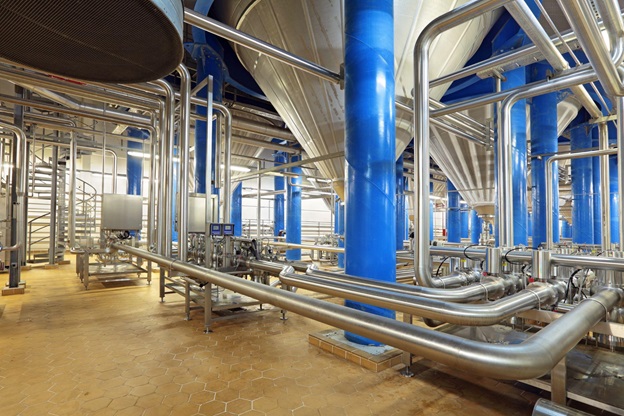In the industrial applications, material selection plays a crucial role in ensuring durability, efficiency, and cost-effectiveness. Among the various materials employed, 304L stainless steel stands out as a preferred choice for piping. This article explores the unique properties and benefits of 304L stainless steel pipes, explaining why they are so widely used across numerous industries.
Introduction to 304L Stainless Steel
304L stainless steel is a low-carbon variant of 304 stainless steel. While similar to its parent grade in many ways, the lower carbon content in 304L minimizes deleterious or harmful carbide precipitation as a result of welding. Consequently, 304L can be used “as welded” in severe corrosion environments and it eliminates the need for annealing.
Properties of 304L Stainless Steel Pipes
- Corrosion Resistance:
304L stainless steel pipes offer excellent corrosion resistance to a wide variety of chemical corrodents, including industrial atmospheres and marine environments. The chromium content (18-20%) combined with nickel (8-12%) provides substantial oxidation resistance at higher temperatures as well as resistance to chloride attack—making it particularly useful in acidic and chlorine-bearing environments.
- Weldability:
The lower carbon content of 304L makes it easier to weld without losing its corrosion resistance properties. This attribute is especially valuable in the construction of industrial piping systems where complex configurations are necessary.
- Durability and Strength:
Despite its relatively lower carbon content, 304L maintains high strength and toughness at temperatures up to 870°C. This makes 304L stainless steel pipes suitable for use in environments involving elevated temperatures and harsh conditions.
- Hygiene:
The non-porous nature of stainless steel makes 304L pipes easy to sanitize, making it an ideal choice for industries requiring strict hygiene conditions like food processing, pharmaceuticals, and catering.
- Aesthetic Appeal:
304L stainless steel does not stain, corrode, or rust as easily as ordinary steel, making it an aesthetically pleasing option for visible piping systems without the need for painting or other surface finishes.
Key Advantages of 304L Stainless Steel Pipes in Industrial Applications
- Versatility:
304L stainless steel is remarkably versatile and can be used in a wide range of applications. It withstands a myriad of temperatures and pressures, which is crucial for systems requiring reliability under stress, such as in the processing of chemicals, high-saline environments like coastal regions, and variable temperature conditions.
- Cost-Effectiveness:
Although initially more expensive than some other materials, 304L stainless steel pipes offer long-term savings due to their durability and low maintenance requirements. The longevity of 304L pipes prevents the need for frequent replacements, thereby reducing total lifecycle costs.
- Low Maintenance:
Thanks to its corrosion resistance, 304L pipes require less maintenance compared to carbon steel and other metallic pipes. This decreases downtime due to repairs and maintenance, ensuring continuous production and operations.
Industrial Applications of 304L Stainless Steel Pipes
- Food and Beverage Industry:
304L is widely used in the food and beverage industry due to its ability to be cleaned easily and resist acid corrosion found in meats, fruits, and dairy. It is commonly used in brewing equipment, milk processing, and wine-making machinery.
- Pharmaceutical Industry:
The hygienic properties of 304L make it suitable for pharmaceutical production facilities, including piping systems that carry reactive and hazardous chemicals.
- Water and Wastewater Treatment:
304L’s resistance to oxidation and corrosion makes it ideal for water handling systems and piping in wastewater treatment plants where exposure to chemicals and saline water is common.
- Automotive Industry:
Used in exhaust systems and other components, 304L withstands the high temperatures found in automotive environments while resisting the corrosive effects of road salts and polluted air.
- Construction and Architecture:
304L is also popular in construction and architectural applications for exterior cladding, handrails, and other high-exposure fixtures due to its longevity and minimal maintenance needs.
Conclusion
The wide adoption of 304L stainless steel pipes across various industries is a testament to its superior properties and benefits. From its excellent corrosion resistance and durability to its aesthetic appeal and cost-effectiveness, 304L stainless steel offers an unmatched combination of features that make it an indispensable part of modern industrial applications.











